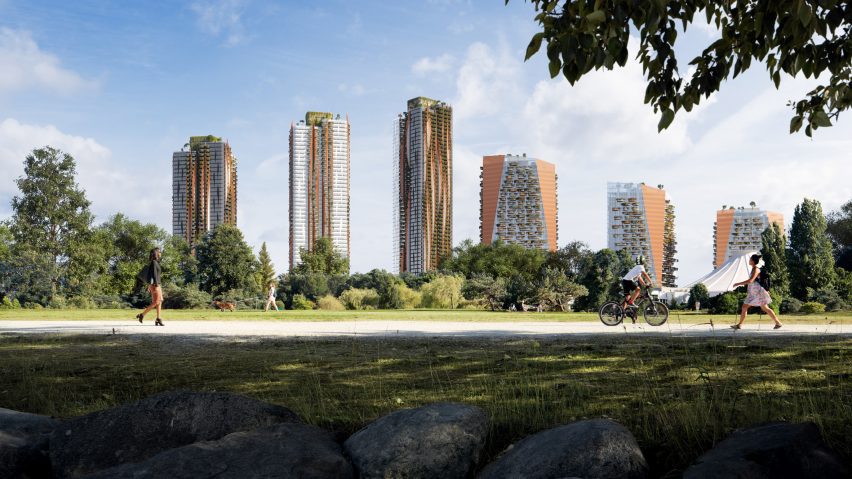
Skyscrapers planned for Indigenous land "look like the future of Vancouver"
Revery Architecture has designed the Sen̓áḵw residential skyscrapers for the Squamish Nation's land in Vancouver, which will aid economic development and "benefit all Canadians", according to the Indigenous group.
More than 11 residential towers, with heights ranging from 12 to 58 storeys, are planned for the development, as well as a series of smaller buildings.
Sen̓áḵw will be arranged around the Burrard Bridge, which connects Downtown Vancouver with the southwestern portions of the city.
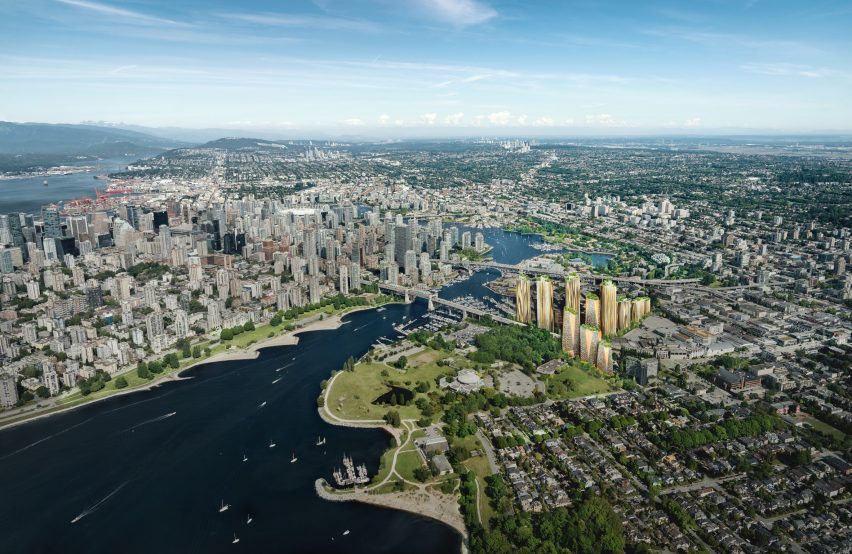
The parcel of land is owned by the Squamish Nation government and is a fraction of the Indigenous group's ancestral homeland, which was expropriated from the group by European colonial settlers gradually over the last three centuries.
Sen̓áḵw is planned on land that was won back in 2003 by the Squamish from the Canadian government after a lengthy legal dispute.
Design architect Revery Architecture based the development on the concept of a "village in the park", which it says was informed "by the values and traditions of the Squamish Nation".
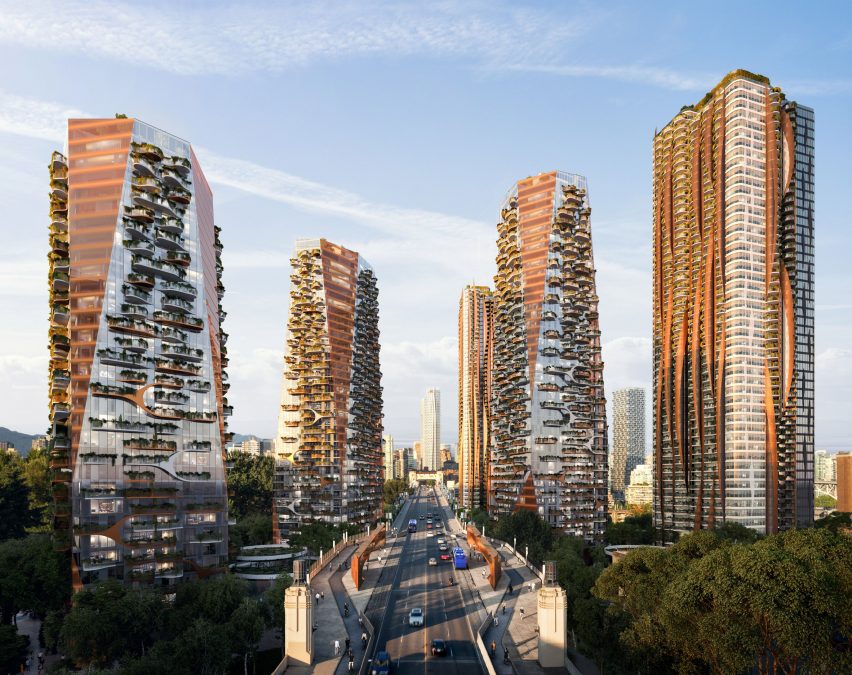
"The idea is to optimize the public realm with a new urban park supporting various forms of activity, circulation and landscapes," Revery Architecture principal Venelin Kokalov told Dezeen.
The studio used two distinct typologies when designing the towers, which together spread out like a "Y", flanking the bridge and extending past it in two directions. The first typology has wider towers with sloped sides and is called "mountain" – the other, "long", has more vertical towers with copper fins running their height.
The "long" towers have cores that are lifted off the ground to create the sensation of walking through a forest on ground level.
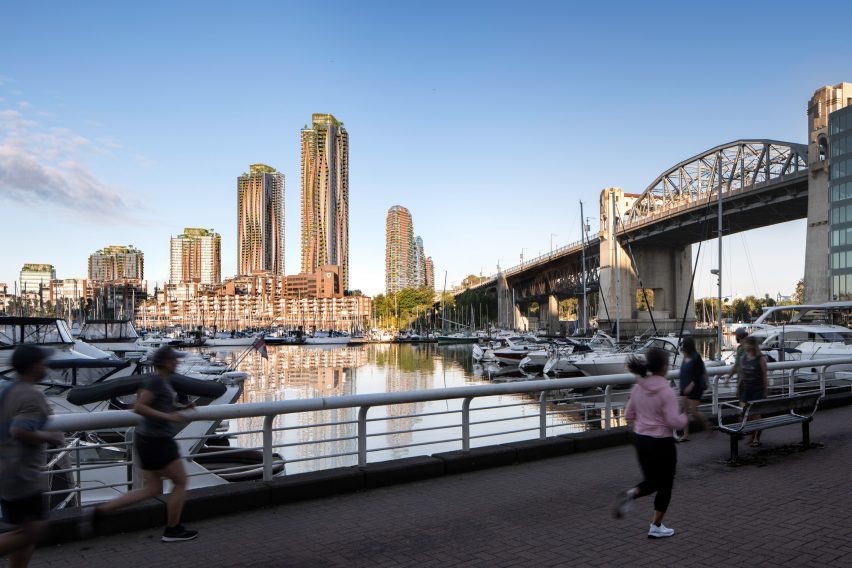
"This gesture increases the openness and porosity through the site, creates natural cover for outdoor areas, and forms a seamless connection between interior and exterior spaces at the ground level," said Kokalov.
Glass facades will be punctuated with copper details on both structures, a material that was chosen for its "cultural significance" to the Squamish Nation.
Squamish Nation culture to be integrated "at all scales"
The team said it is working with community members to integrate the culture of the Squamish Nation "at all scales of the project".
"The process was collaborative with a goal to honour the culture and heritage of the Squamish Nation," a representative from Nch'ḵay̓ Development Corporation, the Squamish government's development arm, told Dezeen.
"This included consultation with Squamish members leading up to the land designation," said the representative, adding that a Cultural Working Group has been formed in the development process.
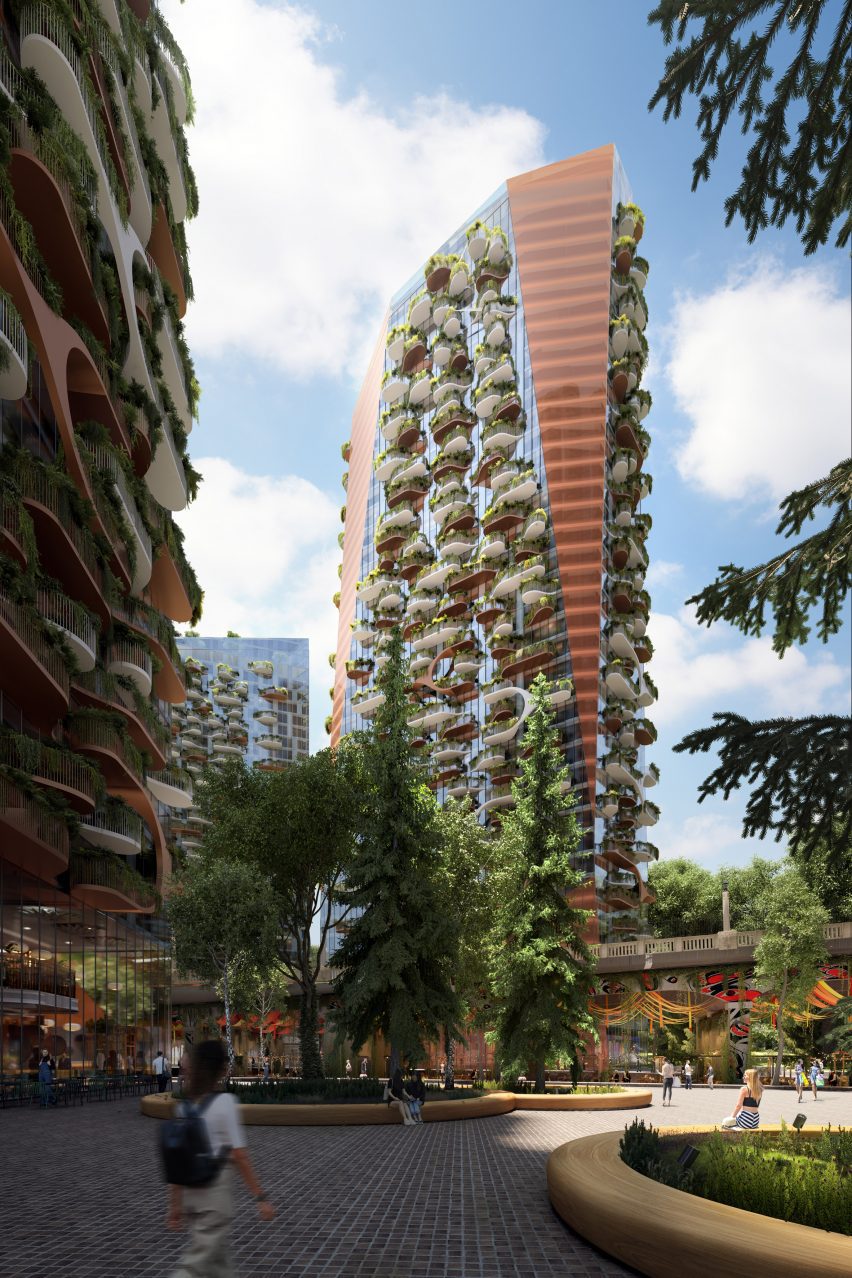
According to Nch'ḵay̓ Development Corporation, possessing a large rental development in the middle of one of the most expensive cities in North America will help the nation on the path to "complete economic independence".
"As such, the project needs to consider the context of potential future development of the lands nearby, which are expected to increase in density significantly. In this context, the design and density of Sen̓áḵw is appropriate," the Nch'ḵay̓ representative said.
"It looks like the future of Vancouver."
While the project will bolster the economic future of the Squamish Nation, it said that it will also help to alleviate the housing crisis in Vancouver by adding thousands of apartments, some affordable, in a "relatively short amount of time".
"The new development at Sen̓áḵw demonstrates that reconciliation is not zero-sum," said Nch'ḵay̓ Development Corporation.
"It will ease Vancouver's housing shortage, will include tens of thousands of square feet of publicly accessible amenities, and will contribute tens of millions of dollars to service improvements in the City of Vancouver."
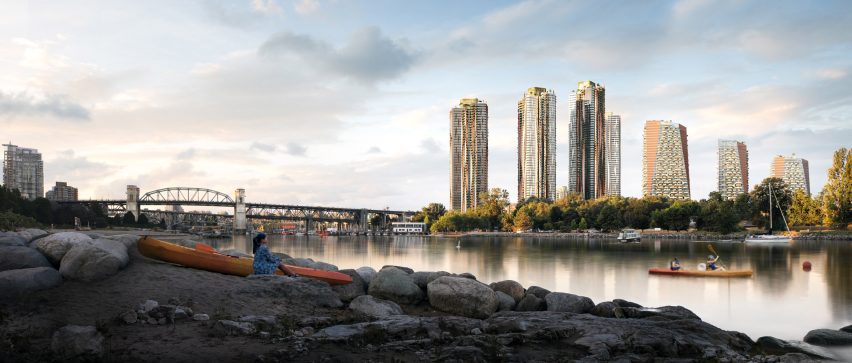
Nch'ḵay̓ Development Corporation also noted that the City of Vancouver has been "supportive" and an "excellent stakeholder", and added that the Squamish have an agreement with the city that works toward integrating the new development with already-existing infrastructure and adding new infrastructure, including a transit hub.
With its focal point on the Burrard Bridge, the Squamish Nation and Revery Architecture have stated that parking will only be available for about 10 per cent of the residences.
"Instead, the project shifts attention on alternative transportation through a unique on-site transit hub, and a transformative new underground bike hub providing storage and maintenance facilities for thousands of bikes," said Kokalov.
"The intent is to create a new infrastructure for a more integrated, inclusive and sustainable multi-modal network."
A number of other sustainable infrastructures will be implemented at the site, and the architecture team has claimed it will be the "first large-scale net-zero operational carbon housing development" in the country.
Some of the infrastructure will be built with mass timber, according to Kokalov — and green roofs, permeable paving and rainwater collection will be included on the site.
"Sen̓áḵw is reconciliation in action"
Canada-based energy company Creative Energy will also include and install a system that will utilise excess heat from the adjacent Metro Vancouver's infrastructure to generate energy.
Sen̓áḵw consists of mostly residential space, all rental, which will be open to the general public, with 250 units reserved for members of the Squamish Nation.
The project comes after the Canadian government's 2015 recommendations for a policy of reconciliation with Indigenous people in Canada after centuries of violence and expropriation.
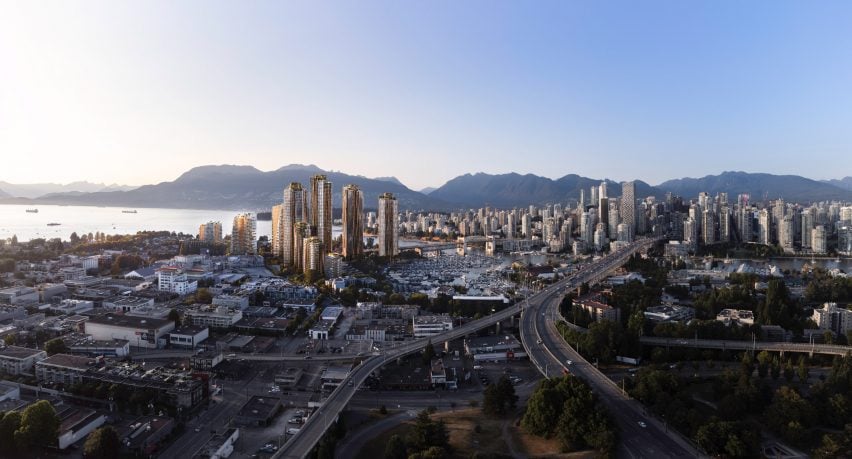
It will be developed in phases, with the final occupancy planned for 2029. Kasian Architecture will be the architect of record, while Revery Architecture will carry out the project design and interior design.
"The development at Sen̓áḵw is reconciliation in action," said Nch'ḵay̓ Development Corporation, which is working alongside local developer Westbank to complete the project.
"When First Nations utilize their lands for value-creating developments within their jurisdiction, everyone benefits. This project is a legacy for the Squamish Nation, but also for the City of Vancouver – and for all of Canada".
Other recent skyscraper projects in Vancouver include a "sculptural and iconic" skyscraper by Kengo Kuma and a twisted skyscraper by BIG.